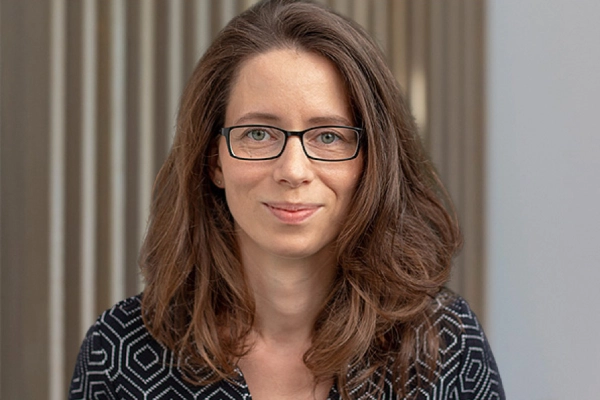Heraeus Precious Metals, a world-leading company in the precious metals industry, announces the launch of the comprehensive research project “AmmoCatCoat.” Under the consortium leadership of Heraeus Precious Metals, together with five project partners, revolutionary technologies will be developed for efficient and sustainable hydrogen production from ammonia. The project, with a total volume of around two million euros, is funded by the German Federal Ministry of Education and Research (BMBF) as part of the Material Hub Initiative and the funding focus “Resource Sovereignty Through Material Innovations Module 1 - Materials for Process Efficiency” (German: „Ressourcensouveränität durch Materialinnovationen Modul 1 - Materialien für Prozesseffizienz“) and will have a duration of three years.
With project partners Heraeus Precious Metals, Fraunhofer ISE, Leibniz Institute for Agricultural Engineering and Bioeconomy (ATB), Centre for Transmission Electron Microscopy (CAU), PYREG GmbH, and Purem by Eberspächer, a highly qualified consortium has been formed that combines expertise in catalysis, biomass conversion, material characterization, and surface treatment. The project aims for the practical demonstration of operation under real-technical conditions at the pilot plant scale. Additionally, scaling concepts will be developed.
“We are proud to lead such a strong consortium and together make a directional contribution to realizing the hydrogen economy,” says Dr.-Ing. Konrad Krois, project manager at Heraeus Precious Metals, "I am convinced that with ‘AmmoCatCoat’ we will succeed in providing a more efficient and sustainable method for ammonia cracking. The energy transition needs solutions that are material-efficient and competitive in operation.”
Hydrogen as an energy carrier plays a key role in the energy transition. For transport, hydrogen can be chemically stored in the form of ammonia and then released again in the so-called “Ammonia Cracking” process. For this chemical reaction, precious metal catalysts based on ruthenium are exceptionally suitable.
To make the process as sustainable, efficient, and cost-effective as possible, various requirements must be met. The materials used need to allow operation at low temperatures and have high long-term stability, as well as be used as sparingly as possible, and ideally are sourced from renewable resources. The project partners are researching how to implement these requirements in a new approach:
In the project, a highly catalytically active ruthenium layer is applied to an electrically heatable catalyst carrier system, which ensures direct and even heat distribution. With this so-called ELIAS system (ELectrIcally heAted catalySt carrier), the heat is brought exactly to where it is needed. The active layer consists of nanoparticles that are finely distributed on a specially tailored carbon material.

Current research results show that the catalytic activity of ruthenium can be significantly improved by using carbon as the catalyst support. The interaction between the carbon support and the ruthenium nanoparticles should not only significantly improve the performance of the catalyst, but also its lifespan. This enables the ruthenium to be used for extended periods of time before the precious metal is recycled at the end of its useful life, thereby allowing further energy savings. The goal is to achieve maximum ammonia conversion at temperatures below 500°C. This results in substantial energy savings in operation - a critical step to increase efficiency and sustainability of hydrogen production from ammonia. The development is focused on a compact design and the longevity and stability of the catalyst. The carrier itself is also made of an innovative material based on sustainable biomass carbons - making it more sustainable as well as more efficient and stable in use than alternative carrier materials.
The project partners:
- Heraeus Precious Metals has extensive expertise in precious metal catalysts and coating carriers with precious metals, including the corresponding development, optimization, and scaling processes.
- The Fraunhofer Institute for Solar Energy Systems ISE has been working in the research field of “Sustainable Synthesis Products” for over 25 years, dealing with the production, transport, and usage of hydrogen-based chemicals, energy carriers, and fuels. It has extensive expertise in thermochemical hydrogen production from PtX products and various applications, including Direct Air Capturing processes.
- The Thermochemical Conversion group at the Leibniz-Institut für Agrartechnik und Bioökonomie e.V. has been researching the transformation of agricultural residues into carbon-rich products (biochar) using pyrolysis and hydrothermal carbonization for about 15 years.
- The Center for Transmission Electron Microscopy (headed by Prof. Kienle) at the Institute for Material Sciences of CAU-Kiel is a well-equipped analytical research center that will design the necessary material analyses.
- PYREG GmbH, a company for plant construction and environmental engineering, has been planning and building EBC-certified, high-quality carbonization systems for more than ten years. PYREG systems close cycles by converting biogenic residues into high-quality biochar (plant charcoal) and renewable energy.
- Purem by Eberspächer brings decades-long expertise in exhaust technology into the project. This includes methods and knowledge from the field of metal finishing and processing, material characterization, and catalysis to optimize the heater element in its composition and shaping. Appropriate surface treatments to improve the adhesion of catalyst materials are among other competencies, complemented by comparative analytics.
